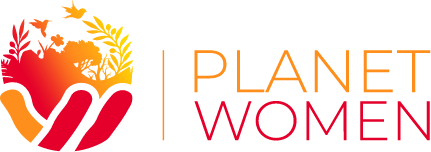Top Tips for Recruiting and Hiring Diverse Candidates
By Janet Nguyen, Chris Spagnola, and Kristine Zeigler
In 2020, leaders in all sectors made bold statements in support of Black Lives Matter in the wake of the murder of George Floyd. It was no different for environmental conservation organizations. Creating more welcoming, inclusive workplace cultures and balancing our teams were named as top priorities. Now, it’s time to ask ourselves the hard questions:
How are we doing on our efforts to educate ourselves and build our awareness around oppression, racism, sexism, and colonialism?
How are we doing things differently in our recruiting and hiring?
How are we fostering more welcoming environments so everyone feels safe and able to contribute to our organizations?
Here are seven tips for recruiting diverse candidates that work at organizations of any size. We invite you to pick one or two today to strengthen your approach and feel a sense of progress and momentum.
1. Post the compensation range in the position description. Being transparent about the pay range is an effective method to reduce wage disparities, according to Harvard Business School economist Zoe Cullen. Don’t ask about salary history, which is illegal in some but not all states. Asking for salary history and making offers based on previous salary history perpetuates historically discriminatory hiring practices.
2. Create consistent questions for every candidate and ask every candidate the same questions. By sticking to the same set of questions, you ensure fairness in the process.
3. Send the questions to the candidates ahead of time. Planet Women recently piloted this technique and found that candidates appreciated knowing what they would be expected to talk about and having time to prepare their answers. After all, we are not hiring for the “Interview Olympics.” We are trying to find a great person for a role, not someone who excels only at answering questions they don’t know are coming in an interview situation. Providing questions in advance is more inclusive and supports people who are differently abled.
4. Know the answer to this question for your organization: “In what ways is your organization ready for a diverse candidate and where do you still have more work to do?” Even if you have just begun your DEI journey, it is important to share that with candidates and be authentic and real about the situation. Culture is an extremely important factor for candidates as they consider where they want to work.
© Tim Mossholder/Unsplash
5. Look at who is on the interview team for each candidate. Can you include members who add balance in terms of age, skills, background, race, perspectives, and talents? Studies show that diverse interview teams reduce in-group bias and favoritism, which can lead to favoring candidates that belong to one’s own group. A recent article in Forbes emphasized the need for both diverse candidate slates and interview panels to increase diverse hiring outcomes.
6. Evaluate your candidates in a consistent manner, with a ratings tool or other method that everyone agrees to before interviews begin. A rating tool with clearly defined criteria that highlights the priorities of the role can provide a consistent way to measure each candidate. This helps minimize general language when debriefing interviews with candidates such as, “My gut says this isn’t the right fit.” Sometimes our gut draws us to our comfort zone and may be influenced by our personal biases. An evaluation tool can bring a lot of clarity and equity to the hiring process, especially when there are multiple decision makers in determining the candidate of choice. Ensure that interviewers are accountable for providing concrete reasons and examples from the interview to support their recommendation to advance or not advance a candidate.
7. Host paid internships from historically Hispanic, Black, and Indigenous universities. Unpaid internships are not accessible to all and result in opportunities largely benefiting candidates with financial means. The University of Arizona, one of Planet Women’s partners in the Colorado River Basin, is a Hispanic- and Indian and Alaska Native-Serving Institution. We are learning about ways to deepen our commitment to collaborating with students of color in this academic relationship and with all of our partnerships.
We hope you find these tips useful. Send us a note below letting us know which tip(s) you like best, and any other tips we missed. Good luck on your journey and know that we are rooting for you.
About the authors: Janet is the Senior Vice President of 100 Women Pathways program at Planet Women. Chris is a partner at ThinkingAhead where she specializes in nonprofit recruiting. Kristine is co-founder and CEO of Planet Women.

